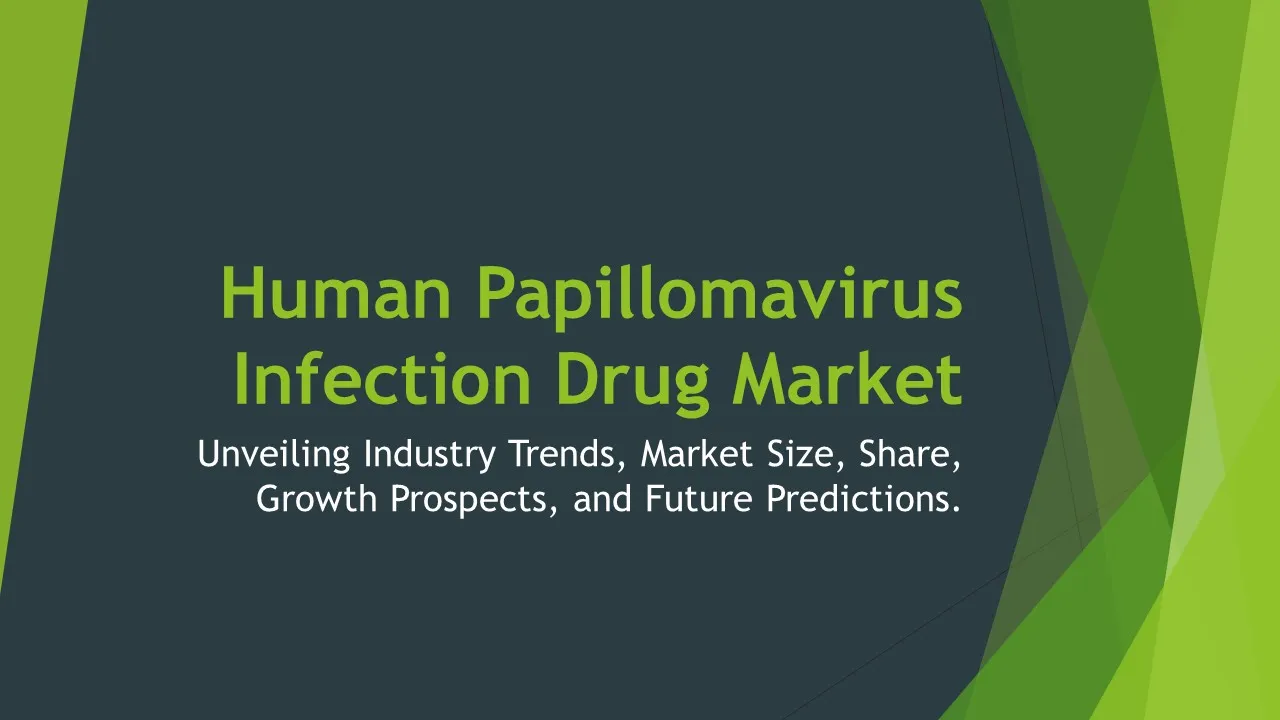Diazepam
Diazepam Market Segments - by Product Type (Tablets, Injections, Syrups, Gels, and Suppositories), Application (Anxiety Disorders, Muscle Spasms, Alcohol Withdrawal, Seizures, and Insomnia), Distribution Channel (Hospitals, Retail Pharmacies, Online Pharmacies, Drug Stores, and Clinics), Ingredient Type (Generic, Branded), and Region (North America, Europe, Asia Pacific, Latin America, and Middle East & Africa) - Global Industry Analysis, Growth, Share, Size, Trends, and Forecast 2025-2035
- Report Preview
- Table Of Content
- Segments
- Methodology
Diazepam Market Outlook
The global diazepam market is projected to reach approximately USD 1.5 billion by 2035, growing at a compound annual growth rate (CAGR) of around 5.2% during the forecast period from 2025 to 2035. This growth can be attributed to the increasing prevalence of anxiety disorders, along with growing awareness regarding mental health treatments and the effectiveness of diazepam as a therapeutic agent. Furthermore, the rising incidences of muscle spasms, alcohol withdrawal symptoms, and seizures are contributing significantly to the demand for diazepam. The introduction of innovative formulations and distribution channels, such as online pharmacies, is also expected to enhance market accessibility. Additionally, expanding healthcare infrastructure and the increasing geriatric population are projected to further boost market growth in the coming years.
Growth Factor of the Market
The diazepam market is experiencing significant growth due to several key factors. Firstly, the global rise in mental health issues, particularly anxiety disorders, has led to an increased demand for effective medications such as diazepam. In addition, the growing elderly population, who are more susceptible to conditions requiring diazepam, is also driving market expansion. The increasing adoption of diazepam in various therapeutic areas, including muscle spasms and seizure management, further amplifies its market potential. Moreover, the introduction of various formulations, including syrups and gels, caters to the diverse needs of patients, thereby enhancing market demand. The convenience of online pharmacies has made it easier for consumers to access diazepam, contributing to its increased sales. Overall, these factors combined suggest a robust growth trajectory for the diazepam market in the coming years.
Key Highlights of the Market
- The global diazepam market is anticipated to reach USD 1.5 billion by 2035.
- A CAGR of 5.2% is expected throughout the forecast period from 2025 to 2035.
- The rising prevalence of anxiety disorders is a primary driver of market growth.
- Growth in the elderly population is contributing positively to market dynamics.
- Increased accessibility through online pharmacies is boosting market penetration.
By Product Type
Tablets:
Tablets represent one of the most common forms of diazepam administration due to their ease of use and dosage accuracy. They are widely prescribed for the management of anxiety disorders and muscle spasms. This form allows for a controlled release of the medication, enhancing patient compliance. The tablet segment is particularly favored for outpatient treatment, where patients require a convenient and portable option. Owing to the increasing prescription of diazepam tablets in both outpatient and inpatient settings, this segment is expected to maintain a strong market position during the forecast period.
Injections:
Diazepam injections are typically utilized in clinical settings for rapid onset of action, particularly in emergency situations such as seizures or severe anxiety attacks. The injectable form allows for immediate relief and is often administered in hospitals and clinics, thereby bolstering its demand in critical care settings. While this segment holds a smaller share in comparison to tablets, its significance cannot be understated, especially in acute scenarios where rapid therapeutic effects are paramount. The growth of this segment is expected to continue, driven by advancements in medical practices and increasing incidences of conditions warranting its use.
Syrups:
Syrups have gained traction particularly among pediatric and geriatric populations due to their easy administration and better palatability. This formulation is especially beneficial for patients who have difficulty swallowing tablets. Syrups allow for flexible dosing, making them an ideal choice for customizable treatment plans. As awareness and prescription rates of diazepam rise in younger and older patients, the syrup segment is anticipated to experience considerable growth. This trend reflects a broader move towards more patient-friendly formulations in the pharmaceutical industry.
Gels:
Gels are another form of diazepam that is gaining popularity due to their transdermal application, which allows for localized treatment of muscle spasms and other conditions. This form of administration minimizes systemic exposure and enhances patient comfort. The gel formulation is particularly appealing to those who may be hesitant to take oral medications or undergo injections. The segment is witnessing a gradual increase in market share due to its advantages, and as manufacturers continue to innovate, the acceptance of diazepam gels is likely to grow in tandem with the broader trend towards non-invasive therapies.
Suppositories:
Suppositories represent a less common, yet significant form of diazepam, primarily used in situations where other routes of administration may not be feasible, such as in patients experiencing severe nausea or vomiting. This formulation allows for rapid absorption, providing quick therapeutic effects. While the market share of suppositories is limited compared to other forms, their unique advantages ensure they will continue to play a role in specific therapeutic contexts. As healthcare providers increasingly recognize the benefits of this administration route, the suppository segment is expected to maintain its niche within the diazepam market.
By Application
Anxiety Disorders:
Diazepam is widely prescribed for the management of anxiety disorders, accounting for a significant portion of the market due to the rising prevalence of these conditions. The effectiveness of diazepam in reducing symptoms of anxiety, such as restlessness and tension, has made it a preferred choice among healthcare providers. As societal awareness of mental health issues increases, more patients are seeking treatment, further driving demand for diazepam in this application segment. The ongoing research into the efficacy of diazepam in various anxiety-related disorders also suggests a sustained growth potential for this application in the future.
Muscle Spasms:
Diazepam is an effective muscle relaxant, commonly utilized in treating muscle spasms resulting from various conditions, including injuries and neurological disorders. The growing incidence of musculoskeletal disorders, combined with an aging population, contributes to increased demand for muscle relaxants like diazepam. Physical therapy and rehabilitation programs often include diazepam as part of a comprehensive treatment plan, enhancing its usage in clinical settings. This application segment is expected to witness steady growth as healthcare providers continue to focus on pain management and functional recovery for patients with muscle spasms.
Alcohol Withdrawal:
In the context of alcohol withdrawal, diazepam is frequently prescribed to manage symptoms, including anxiety, tremors, and seizures. This application is critical as healthcare systems worldwide address substance abuse issues. The increasing recognition of alcohol dependence and the need for effective management strategies fuel the demand for diazepam in this application area. The focus on rehabilitation services and comprehensive addiction treatment programs further supports the growth of diazepam utilization for alcohol withdrawal management, indicating a positive trend for this segment.
Seizures:
Diazepam is also utilized as an adjunctive treatment for seizures, particularly in emergency situations, where rapid intervention is crucial. This application is vital in managing acute seizure episodes, as diazepam can provide quick relief. The increasing prevalence of epilepsy and other seizure disorders contributes to the demand for effective medications, including diazepam. This segment is expected to maintain its relevance in the market as healthcare providers continue to emphasize the importance of timely pharmacological intervention in seizure management.
Insomnia:
Insomnia and other sleep-related disorders are increasingly recognized as significant public health issues, leading to a rise in diazepam prescriptions for sleep management. The effectiveness of diazepam in inducing sleep and reducing nighttime awakenings makes it a commonly prescribed medication in this category. As more individuals seek solutions for sleep disturbances, the demand for diazepam in the context of insomnia management is expected to grow. However, concerns regarding dependence and long-term use may prompt a shift towards alternative therapies, which could influence the trajectory of this application segment in the future.
By Distribution Channel
Hospitals:
The hospital distribution channel plays a critical role in the diazepam market, as many patients receive their prescriptions directly during inpatient stays or emergency visits. Hospitals typically have access to a broader range of formulations and can effectively manage administration protocols. The increasing patient turnover in hospitals, particularly for conditions such as anxiety, seizures, and alcohol withdrawal, contributes to the steady demand for diazepam in these settings. This segment is expected to experience continuous growth as hospitals prioritize mental health and effective management of acute conditions.
Retail Pharmacies:
Retail pharmacies represent a significant distribution channel for diazepam, as they cater to the general public, providing accessible options for patients needing prescription refills and over-the-counter medications. This channel benefits from the growing awareness of mental health treatments, leading to an increase in prescriptions for diazepam. Retail pharmacies often offer a more personalized approach to medication dispensing, allowing patients to consult with pharmacists regarding usage guidelines and potential side effects. As consumer demand for convenient access to medications rises, the retail pharmacy segment is expected to remain a robust contributor to the diazepam market.
Online Pharmacies:
The rise of online pharmacies has transformed the way consumers access medications, including diazepam. The convenience of purchasing medications from home has become increasingly appealing, particularly for individuals who may find it challenging to visit physical pharmacies. This distribution channel is expected to witness significant growth as more patients become comfortable navigating digital healthcare platforms. Online pharmacies often offer competitive pricing and promotions, making diazepam more accessible to a wider population. The trend towards e-commerce in the pharmaceutical sector is likely to enhance the market presence of diazepam through this channel.
Drug Stores:
Drug stores serve as a specialized distribution channel for diazepam, often carrying a range of prescription and over-the-counter medications. They provide a conducive environment for patients seeking specific treatments, including diazepam, without the need for a traditional pharmacy setup. Drug stores frequently engage in community health initiatives, which may include seminars on mental health and medication management. This engagement can help increase awareness of diazepam’s therapeutic uses and drive patient demand. The flexibility and personalized approach of drug stores contribute positively to their role in the distribution of diazepam.
Clinics:
Clinics are essential distribution points for diazepam, especially for patients receiving outpatient treatment for anxiety disorders, muscle spasms, or other conditions. These settings allow for direct consultations between healthcare providers and patients, enhancing treatment adherence and education regarding medication use. Clinics often have integrated patient management systems, which provide ongoing monitoring and adjustments to treatment plans as needed. This close relationship between patients and providers can foster increased prescriptions of diazepam as part of comprehensive care strategies. As clinics invest in patient-centered care models, the demand for diazepam through this channel is expected to grow.
By Ingredient Type
Generic:
The generic ingredient type of diazepam plays a significant role in the market due to its affordability and accessibility. Generic formulations allow for wider distribution and increase market penetration, especially among patients who may be uninsured or underinsured. The presence of numerous manufacturers has led to increased competition and competitive pricing, making diazepam more accessible to a broader segment of the population. The preference for generic medications is expected to continue, as healthcare providers and patients increasingly recognize the therapeutic equivalence of generics to branded counterparts.
Branded:
Branded diazepam products continue to hold a substantial share of the market due to established trust and recognition among healthcare providers and patients. Branded formulations often come with extensive marketing and educational resources, informing both patients and physicians about their efficacy and safety profiles. While branded diazepam typically commands a higher price point, their perceived value and reliability contribute to their ongoing demand. The branded segment is expected to maintain its significance in the market as manufacturers invest in research and development to enhance product offerings and patient support initiatives.
By Region
Northern America dominates the diazepam market, primarily driven by high healthcare expenditures and a growing prevalence of mental health disorders. The region holds a substantial market share, estimated at around 45%, and is projected to grow at a CAGR of 5.5% during the forecast period. The robust healthcare infrastructure and availability of advanced treatment modalities contribute to the high demand for diazepam in the United States and Canada. The increasing focus on mental health awareness and treatment options is likely to further propel market growth in this region.
Europe follows closely in terms of market share, accounting for approximately 30% of the global diazepam market. The region's growth is supported by a rising population addressing anxiety disorders and the expansion of mental health services. Countries such as Germany, France, and the United Kingdom are leading consumers of diazepam, driven by healthcare reforms and emphasis on mental health. Additionally, the increasing availability of diazepam through various distribution channels, including online pharmacies, is enhancing consumer access and contributing to market growth in Europe.
Opportunities
There are numerous opportunities for growth within the diazepam market, driven by evolving healthcare practices and improving access to mental health treatments. One significant opportunity lies in the increasing awareness of mental health issues globally, leading to more patients seeking treatment for anxiety disorders and related conditions. As societies gradually destigmatize mental health, the demand for effective medications like diazepam is expected to increase. Additionally, the expansion of telemedicine and online healthcare platforms presents a unique opportunity for diazepam manufacturers to reach broader audiences, allowing patients to receive consultations and prescriptions conveniently. The integration of technology in healthcare can enhance patient engagement and adherence to treatment, driving market growth further.
Furthermore, the continuous research and development of innovative formulations cater to specific patient needs and preferences, creating additional opportunities for market expansion. For instance, developing new delivery mechanisms, such as patches and extended-release formulations, could address issues of compliance and improve therapeutic outcomes. Collaborations between pharmaceutical companies and healthcare providers can foster a more comprehensive approach to treating conditions requiring diazepam, expanding its application potential. As regulatory agencies become more supportive of new drug formulations and market entries, the overall landscape for diazepam is likely to benefit significantly, opening new avenues for growth and innovation.
Threats
Despite the promising growth trajectory of the diazepam market, it faces numerous threats that could impact its future performance. One of the most significant threats is the increasing awareness of the risks associated with benzodiazepine use, including dependency and withdrawal symptoms. This growing concern has led to heightened scrutiny from regulatory agencies and healthcare providers, potentially resulting in stricter prescription guidelines and reduced usage of diazepam. The rise of alternative therapies, such as cognitive behavioral therapy and non-benzodiazepine anxiolytics, may also pose a challenge to the diazepam market, as patients and healthcare providers seek safer, non-addictive options for treating anxiety and related conditions.
Additionally, the market is subject to fluctuations in regulations and reimbursement policies related to pharmaceuticals. Changes in healthcare reimbursement structures can significantly impact the affordability and accessibility of diazepam for patients, leading to decreased demand. Furthermore, the potential emergence of counterfeit medications in the market presents a threat to consumer safety and can undermine the reputation of legitimate diazepam products. As the market adapts to these challenges, companies must focus on building consumer trust and demonstrating the ongoing efficacy and safety of diazepam to navigate these potential threats successfully.
Competitor Outlook
- Roche Holdings AG
- Pfizer Inc.
- Teva Pharmaceutical Industries Ltd.
- Sanofi S.A.
- AbbVie Inc.
- Novartis AG
- GSK (GlaxoSmithKline) plc
- Mylan N.V.
- Hikma Pharmaceuticals PLC
- Sun Pharmaceutical Industries Ltd.
- Aceto Corporation
- Endo International plc
- Dr. Reddy's Laboratories Ltd.
- Amgen Inc.
- Alvogen, Inc.
The diazepam market is characterized by a highly competitive landscape, with numerous players vying for market share across various segments. Major pharmaceutical companies, including Roche Holdings AG and Pfizer Inc., dominate the market with well-established brands and robust R&D capabilities. These companies benefit from their extensive distribution networks, enabling them to reach a diverse customer base effectively. Additionally, the presence of generic manufacturers like Teva Pharmaceutical Industries Ltd. and Mylan N.V. has intensified competition, particularly in the price-sensitive segments of the market. This competition not only drives innovation but also influences pricing strategies, ultimately benefiting consumers through improved access to diazepam products.
In the competitive landscape, companies are increasingly focusing on research and development to innovate and expand their product offerings. For instance, Sanofi S.A. and AbbVie Inc. are actively engaged in developing new formulations and delivery mechanisms to enhance patient compliance and address unmet needs in the market. The collaboration between pharmaceutical companies and healthcare providers is becoming increasingly important, as it enables the development of comprehensive treatment protocols that integrate diazepam with other therapeutic approaches. This collaborative approach supports the ongoing evolution of the diazepam market, positioning companies to better navigate future challenges and capitalize on emerging opportunities.
Among the leading companies in the diazepam market, Teva Pharmaceutical Industries Ltd. stands out for its extensive portfolio of generic products, making it a key player in driving affordability and access to diazepam. The company's commitment to quality and regulatory compliance has bolstered its reputation in the market. Similarly, GSK (GlaxoSmithKline) plc leverages its established brand reputation to maintain a strong presence in the diazepam market, focusing on patient-centric solutions and community health initiatives. As competition intensifies, companies are expected to invest heavily in marketing and awareness campaigns, highlighting the therapeutic benefits of diazepam while promoting safe usage to maintain consumer trust and loyalty.
1 Appendix
- 1.1 List of Tables
- 1.2 List of Figures
2 Introduction
- 2.1 Market Definition
- 2.2 Scope of the Report
- 2.3 Study Assumptions
- 2.4 Base Currency & Forecast Periods
3 Market Dynamics
- 3.1 Market Growth Factors
- 3.2 Economic & Global Events
- 3.3 Innovation Trends
- 3.4 Supply Chain Analysis
4 Consumer Behavior
- 4.1 Market Trends
- 4.2 Pricing Analysis
- 4.3 Buyer Insights
5 Key Player Profiles
- 5.1 Amgen Inc.
- 5.1.1 Business Overview
- 5.1.2 Products & Services
- 5.1.3 Financials
- 5.1.4 Recent Developments
- 5.1.5 SWOT Analysis
- 5.2 Mylan N.V.
- 5.2.1 Business Overview
- 5.2.2 Products & Services
- 5.2.3 Financials
- 5.2.4 Recent Developments
- 5.2.5 SWOT Analysis
- 5.3 AbbVie Inc.
- 5.3.1 Business Overview
- 5.3.2 Products & Services
- 5.3.3 Financials
- 5.3.4 Recent Developments
- 5.3.5 SWOT Analysis
- 5.4 Novartis AG
- 5.4.1 Business Overview
- 5.4.2 Products & Services
- 5.4.3 Financials
- 5.4.4 Recent Developments
- 5.4.5 SWOT Analysis
- 5.5 Pfizer Inc.
- 5.5.1 Business Overview
- 5.5.2 Products & Services
- 5.5.3 Financials
- 5.5.4 Recent Developments
- 5.5.5 SWOT Analysis
- 5.6 Sanofi S.A.
- 5.6.1 Business Overview
- 5.6.2 Products & Services
- 5.6.3 Financials
- 5.6.4 Recent Developments
- 5.6.5 SWOT Analysis
- 5.7 Alvogen, Inc.
- 5.7.1 Business Overview
- 5.7.2 Products & Services
- 5.7.3 Financials
- 5.7.4 Recent Developments
- 5.7.5 SWOT Analysis
- 5.8 Aceto Corporation
- 5.8.1 Business Overview
- 5.8.2 Products & Services
- 5.8.3 Financials
- 5.8.4 Recent Developments
- 5.8.5 SWOT Analysis
- 5.9 Roche Holdings AG
- 5.9.1 Business Overview
- 5.9.2 Products & Services
- 5.9.3 Financials
- 5.9.4 Recent Developments
- 5.9.5 SWOT Analysis
- 5.10 Endo International plc
- 5.10.1 Business Overview
- 5.10.2 Products & Services
- 5.10.3 Financials
- 5.10.4 Recent Developments
- 5.10.5 SWOT Analysis
- 5.11 GSK (GlaxoSmithKline) plc
- 5.11.1 Business Overview
- 5.11.2 Products & Services
- 5.11.3 Financials
- 5.11.4 Recent Developments
- 5.11.5 SWOT Analysis
- 5.12 Hikma Pharmaceuticals PLC
- 5.12.1 Business Overview
- 5.12.2 Products & Services
- 5.12.3 Financials
- 5.12.4 Recent Developments
- 5.12.5 SWOT Analysis
- 5.13 Dr. Reddy's Laboratories Ltd.
- 5.13.1 Business Overview
- 5.13.2 Products & Services
- 5.13.3 Financials
- 5.13.4 Recent Developments
- 5.13.5 SWOT Analysis
- 5.14 Sun Pharmaceutical Industries Ltd.
- 5.14.1 Business Overview
- 5.14.2 Products & Services
- 5.14.3 Financials
- 5.14.4 Recent Developments
- 5.14.5 SWOT Analysis
- 5.15 Teva Pharmaceutical Industries Ltd.
- 5.15.1 Business Overview
- 5.15.2 Products & Services
- 5.15.3 Financials
- 5.15.4 Recent Developments
- 5.15.5 SWOT Analysis
- 5.1 Amgen Inc.
6 Market Segmentation
- 6.1 Diazepam Market, By Application
- 6.1.1 Anxiety Disorders
- 6.1.2 Muscle Spasms
- 6.1.3 Alcohol Withdrawal
- 6.1.4 Seizures
- 6.1.5 Insomnia
- 6.2 Diazepam Market, By Product Type
- 6.2.1 Tablets
- 6.2.2 Injections
- 6.2.3 Syrups
- 6.2.4 Gels
- 6.2.5 Suppositories
- 6.3 Diazepam Market, By Ingredient Type
- 6.3.1 Generic
- 6.3.2 Branded
- 6.4 Diazepam Market, By Distribution Channel
- 6.4.1 Hospitals
- 6.4.2 Retail Pharmacies
- 6.4.3 Online Pharmacies
- 6.4.4 Drug Stores
- 6.4.5 Clinics
- 6.1 Diazepam Market, By Application
7 Competitive Analysis
- 7.1 Key Player Comparison
- 7.2 Market Share Analysis
- 7.3 Investment Trends
- 7.4 SWOT Analysis
8 Research Methodology
- 8.1 Analysis Design
- 8.2 Research Phases
- 8.3 Study Timeline
9 Future Market Outlook
- 9.1 Growth Forecast
- 9.2 Market Evolution
10 Geographical Overview
- 10.1 Europe - Market Analysis
- 10.1.1 By Country
- 10.1.1.1 UK
- 10.1.1.2 France
- 10.1.1.3 Germany
- 10.1.1.4 Spain
- 10.1.1.5 Italy
- 10.1.1 By Country
- 10.2 Diazepam Market by Region
- 10.3 Asia Pacific - Market Analysis
- 10.3.1 By Country
- 10.3.1.1 India
- 10.3.1.2 China
- 10.3.1.3 Japan
- 10.3.1.4 South Korea
- 10.3.1 By Country
- 10.4 Latin America - Market Analysis
- 10.4.1 By Country
- 10.4.1.1 Brazil
- 10.4.1.2 Argentina
- 10.4.1.3 Mexico
- 10.4.1 By Country
- 10.5 North America - Market Analysis
- 10.5.1 By Country
- 10.5.1.1 USA
- 10.5.1.2 Canada
- 10.5.1 By Country
- 10.6 Middle East & Africa - Market Analysis
- 10.6.1 By Country
- 10.6.1.1 Middle East
- 10.6.1.2 Africa
- 10.6.1 By Country
- 10.1 Europe - Market Analysis
11 Global Economic Factors
- 11.1 Inflation Impact
- 11.2 Trade Policies
12 Technology & Innovation
- 12.1 Emerging Technologies
- 12.2 AI & Digital Trends
- 12.3 Patent Research
13 Investment & Market Growth
- 13.1 Funding Trends
- 13.2 Future Market Projections
14 Market Overview & Key Insights
- 14.1 Executive Summary
- 14.2 Key Trends
- 14.3 Market Challenges
- 14.4 Regulatory Landscape
Segments Analyzed in the Report
The global Diazepam market is categorized based on
By Product Type
- Tablets
- Injections
- Syrups
- Gels
- Suppositories
By Application
- Anxiety Disorders
- Muscle Spasms
- Alcohol Withdrawal
- Seizures
- Insomnia
By Distribution Channel
- Hospitals
- Retail Pharmacies
- Online Pharmacies
- Drug Stores
- Clinics
By Ingredient Type
- Generic
- Branded
By Region
- North America
- Europe
- Asia Pacific
- Latin America
- Middle East & Africa
Key Players
- Roche Holdings AG
- Pfizer Inc.
- Teva Pharmaceutical Industries Ltd.
- Sanofi S.A.
- AbbVie Inc.
- Novartis AG
- GSK (GlaxoSmithKline) plc
- Mylan N.V.
- Hikma Pharmaceuticals PLC
- Sun Pharmaceutical Industries Ltd.
- Aceto Corporation
- Endo International plc
- Dr. Reddy's Laboratories Ltd.
- Amgen Inc.
- Alvogen, Inc.
- Publish Date : Jan 21 ,2025
- Report ID : PH-66364
- No. Of Pages : 100
- Format : |
- Ratings : 4.5 (110 Reviews)









